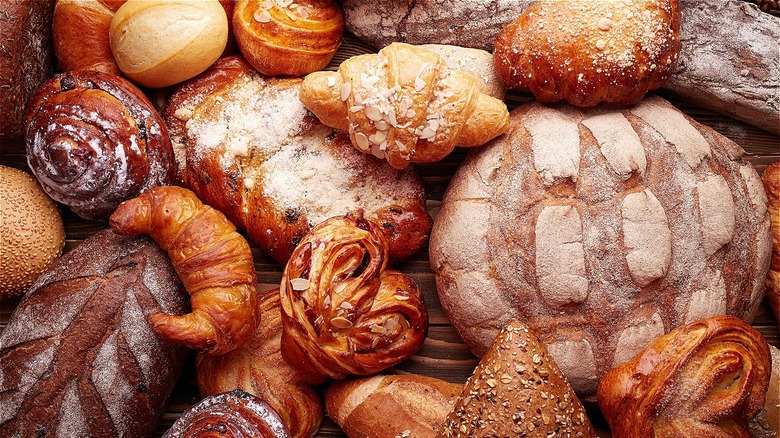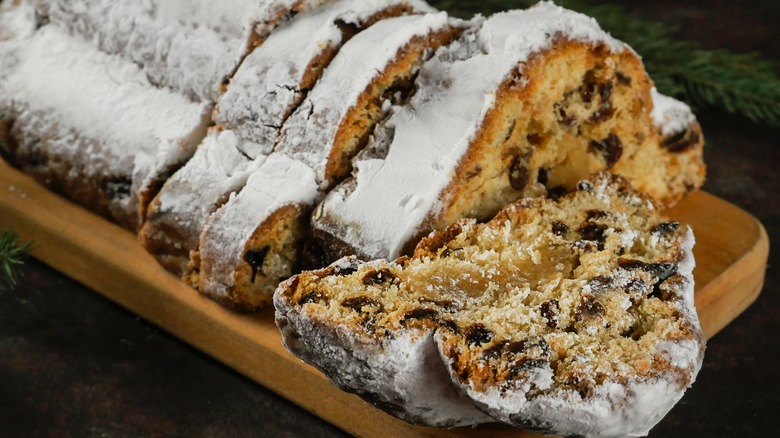What Actually Is Stollen Bread?
Spelling is important — case in point, stolen vs. stollen bread. While the former refers to a loaf that someone has, er, omitted to pay for (thus passing the cost on to the rest of us shoppers in the form of a price increase), the latter is a tasty German Christmas treat. Holiday stollen, unlike many traditional foods, has a back story that is surprisingly unshrouded by the mists of time. As the Dresden Stollen Association relates, the bread took top prize in a very early predecessor of the Pillsbury Bake-Off that was held in 1329. This cooking contest was sponsored by the Bishop of Nauruburg and so enthusiastic was he about the winning entry that he issued a decree reserving 25% of the area's grain for its production.
Stollen baking back in the day must have required a substantial amount of flour as those early loaves weighed a robust 30 pounds. The largest one on record, though, was commissioned in 1730 by an elector who went by the epithet Augustus the Strong. His stomach, too, must have been very strong and his friends and relations numerous, as his super-sized stollen weighed in at 1.8 tons. Stollens today are considerably smaller, of course, but they're still the same delicious sweet bread flavored with fruit that's been a fan favorite since the 14th century (which was approximately six centuries before the word "fan" was first used in this sense).
Stollen may have a delightful surprise inside
So what goes into a stollen? The official Dresden-baked stollen, as per the aforementioned Stollen Association, is a sweet yeast bread made with no eggs, but with plenty of milk and butter – never margarine, though, as this is expressly forbidden, as are any artificial ingredients. The dough is flavored with unspecified spices and spirits (some recipes indicate that rum, mace, and nutmeg may be involved), while mix-ins consist of raisins, almonds, and candied citrus peel.
While Dresden stollen's recipe may be über-traditional, it's not the only one. There are a number of different variants, including mohnstollen made with poppy seeds, nussstollen made with walnuts or hazelnuts, and quarkstollen made with cottage cheese or, more properly, with quark. One kind of stollen that seems to be particularly popular in the U.S. is marzipanstollen, which, as the name implies, is filled with marzipan or almond paste. Unlike the Kinder Egg, another German import containing hidden treasure, the marzipan filling inside a stollen is unlikely to be banned as it poses no danger to anything but your diet should you succumb to temptation and serve yourself a second slice. (No judging here, since we've been known to go for thirds.)

